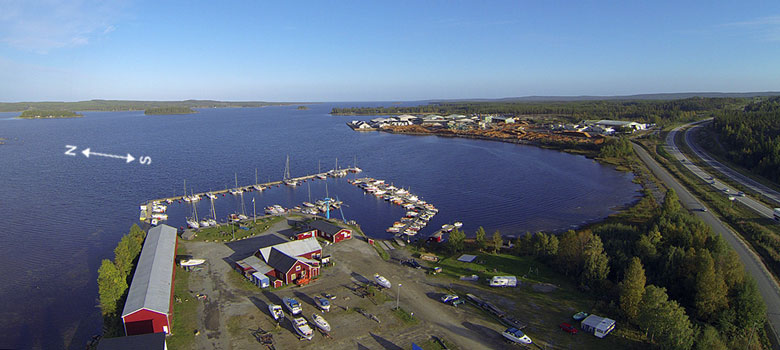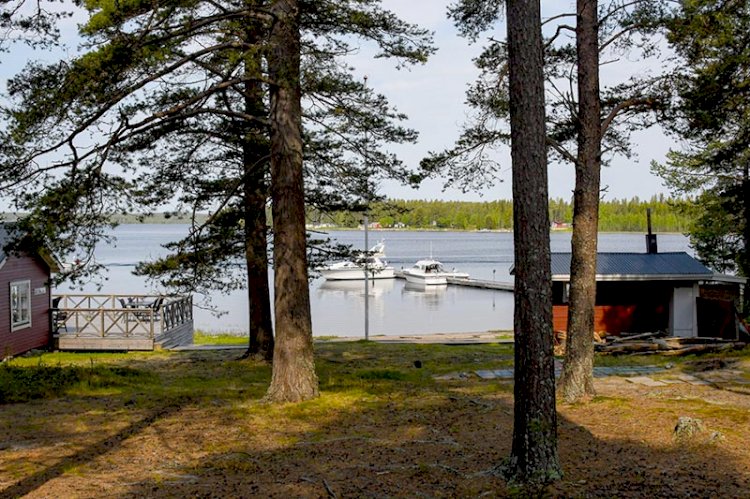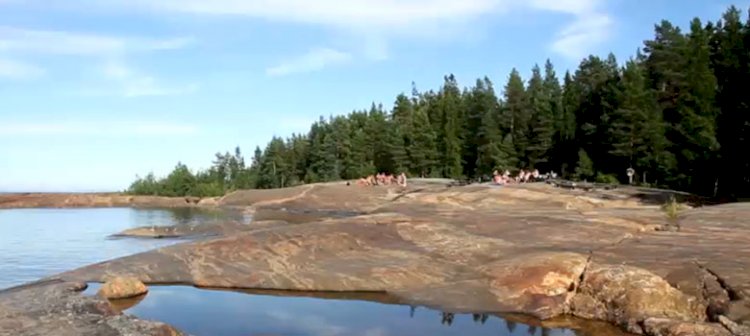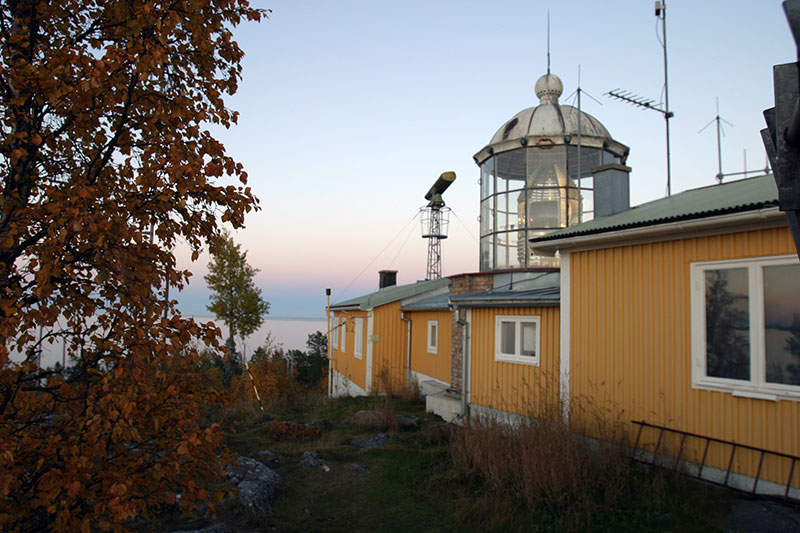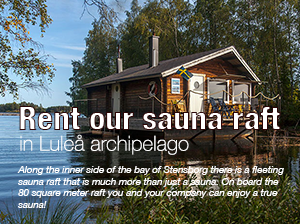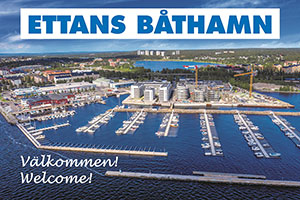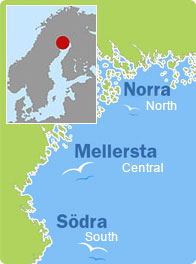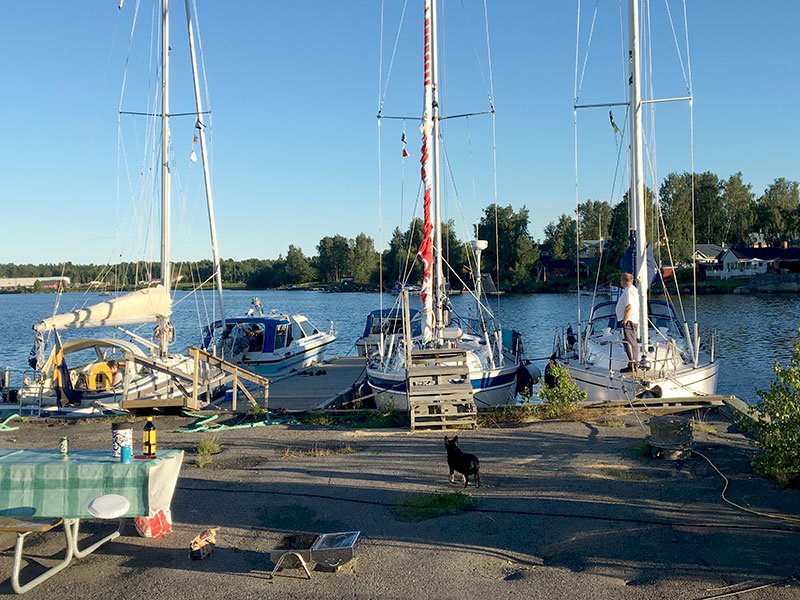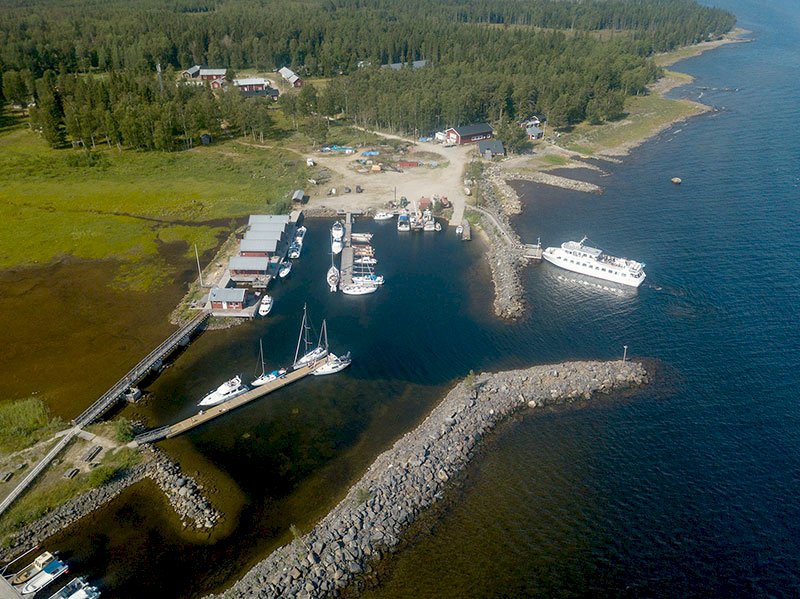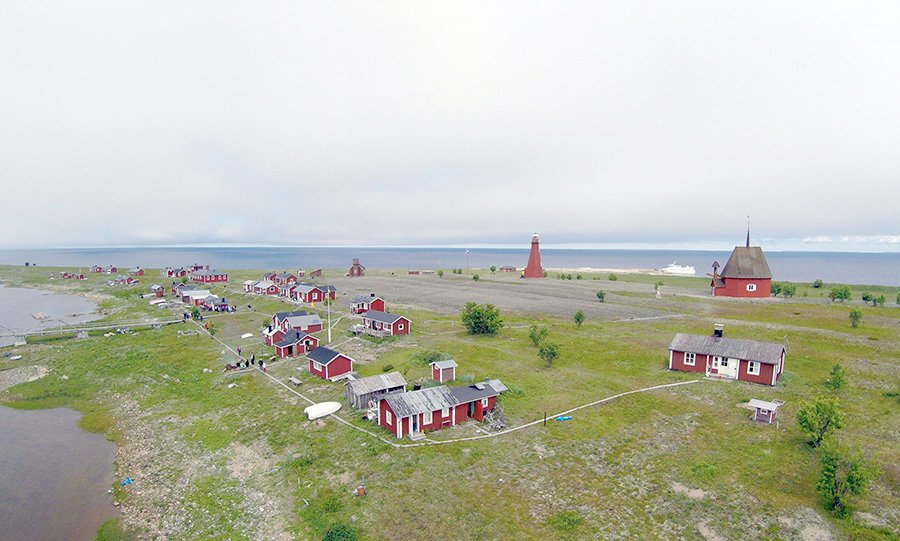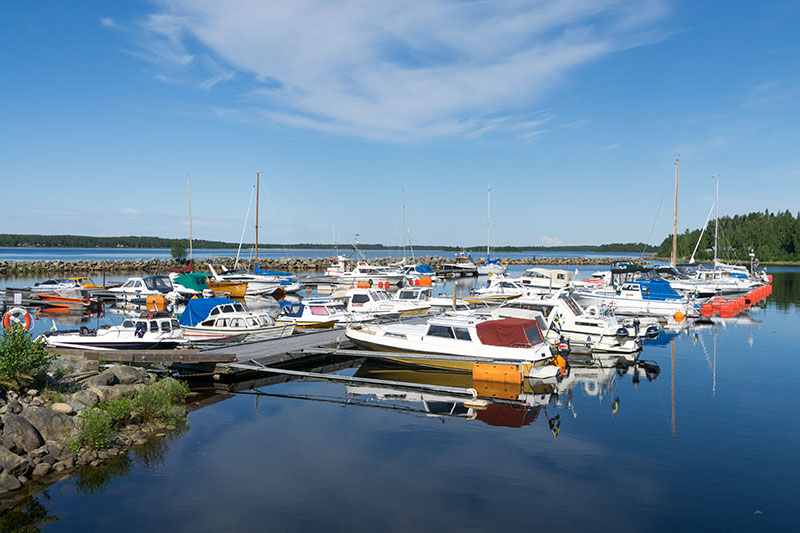Skötgrönnan, Skellefteå (South)
Skötgrönnan is a distinctive island located just over 2 km from the coast at Skallön south of Bureå.

In an area no larger than a square kilometre you will find interesting history, a recreational paradise, a unique flora and a rich birdlife.
Facts
Excursion harbour/ nature reserve
Nautical chart 422
Outhouse toilet and attraction.
Anchoring in the bay. There is a jetty available.
History
The history of the island begins when the island rose up out of the sea during the 17th century. It quickly became an important part of the fishing industry along the coast. Reminders from that time include foundations, labyrinths and a compass rose. Skötgrönnan is the southernmost of the sandy islands along the Bay of Bothnia. The only parts of the island that don’t consist of sand are a small, round set of outcrops on the northern part of the island, and a reef of boulders and stones to the southeast. The island is home to sparse, low growing pine forest interspersed with open sand moors with scattered bushes. Beach pea, lyme grass and various moss varieties grow in the sand. The island is lined with nice sandy beaches and is a popular destination for excursions during high summer. Skötgrönnan’s nature reserve was established in 1968, and the area is also part of the Natura 2000 network with the aim of conserving its special environment and flora.
Let’s take a walk around the island. A sandy beach, smooth and warm, meets us with small and medium-sized stones spread in rows. Our walk continues along the shore and its sand dunes, which provide shelter when the northerly wind blows. We come to more rectangular outcrops that appear to be sawn into large blocks. When the inland ice was advancing, the ice picked up large pieces of rock along its way, or else the rock was split apart by the frost. The outcrops on the northern side of the island are gentler in shape, since that side of the island was directly facing the advancing inland ice.
After a strenuous hike between large boulders and hops over crevices, we approach a sandy beach with sand that is just as soft as before, although the stones are a little rougher, and there are also pieces of flint here and there. It has been said that in the old days, when cargo ships came to the harbours on the coast, such as Bureå, Örviken and Skelleftehamn etc., they had flint in the cargo hold as ballast. Before the boats put to at the quay, they dumped the flint into the sea. That is why flint can be found along our coast, even though it doesn’t really exist in our bedrock. At the top of the sand dunes we are met by a magnificent sight, and we also become aware of the intense aroma of roses. White and red downy roses grow abundantly in the plump bushes here, and the ground is covered by violet beach pea.
We are soon at the island’s southernmost point, called Gadden. If we look behind us, we see that the beach lies in a little lagoon, and if we look ahead again we see that there are outcrops stretching out into the water. Farthest out on a rock there is a seal resting, no doubt full and content after a good day’s fishing. The sight feels unique, but it will probably become more common in the future, since the number of seals in the Bay of Bothnia is increasing all the time.
We are now walking on a beach on the northern side of the island, with cobblestones and roundly smoothed gravel. When a storm comes in from the east, the waves are not merciful to this side of the island. The wind builds up from the Finnish side of the Bay and has incredible force when it reaches this shore. On the northern side of the island there are also high cliffs with gentle shapes. This is the highest part of the island. We round yet another point, this time called Kyrkrevet, and we pass a beach with large round stones and even larger boulders. The roses provide a lovely scent here and there during our stroll along the beach, with the bushes spread out around us. We then pass a short stretch of sandy beach with even more beautiful smoothed stones, before we are back where we started by our boat.
Skötgrönnan belongs to the municipality of Piteå.




